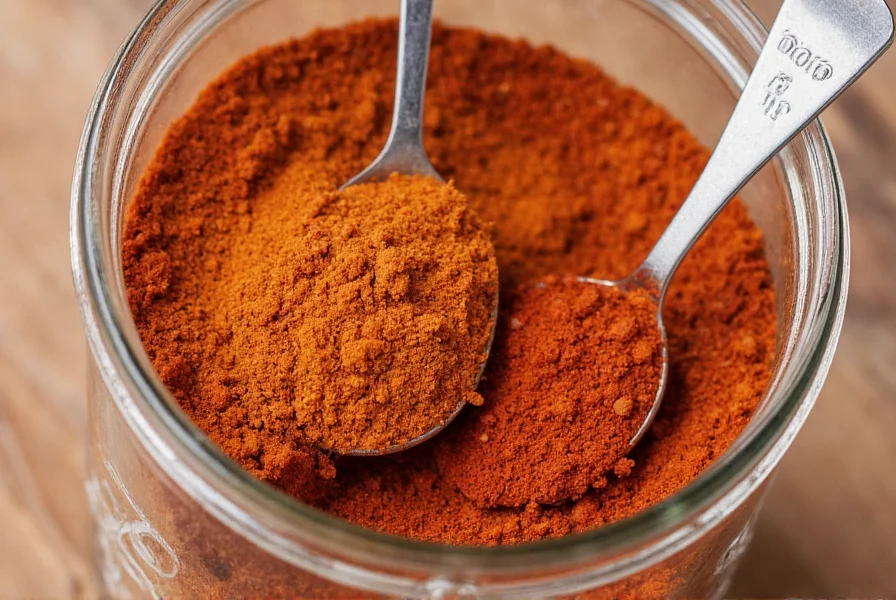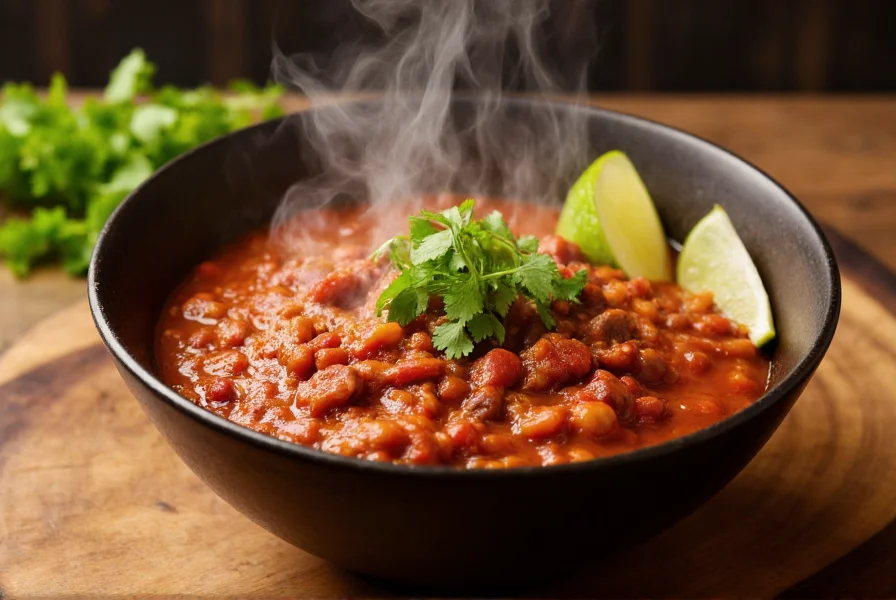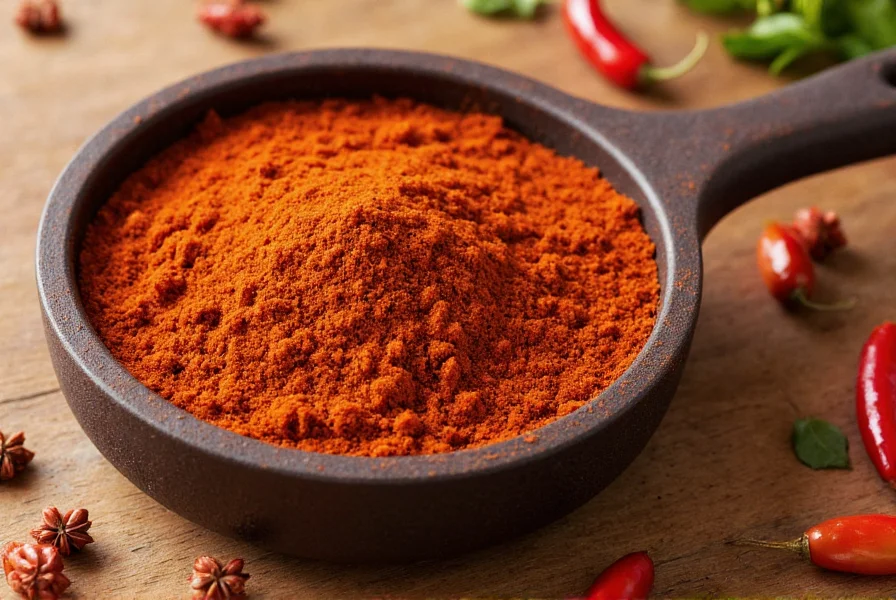Creating the perfect chili spice blend requires understanding how different spices interact to create complex, balanced flavors. While many home cooks rely on pre-made mixes, crafting your own chili seasoning allows for customization based on personal taste preferences and dietary needs. This guide explores the science behind chili spices, provides a versatile recipe you can adapt for various chili styles, and shares professional techniques to maximize flavor development.
The Science Behind Chili Spices
Effective chili seasoning isn't just about heat—it's about creating layered flavors that develop during cooking. The Maillard reaction (browning of meat) combines with spice compounds to create hundreds of new flavor molecules. Understanding how different spice components work will help you create better chili:
| Spice Component | Chemical Compound | Flavor Contribution | Optimal Addition Time |
|---|---|---|---|
| Chili powder | Capsaicinoids | Heat, fruitiness | With aromatics |
| Cumin | Cuminaldehyde | Earthy, nutty depth | With aromatics |
| Paprika | Carotenoids | Sweetness, color | With aromatics |
| Oregano | Carvacrol | Herbal, slightly bitter | During simmering |
| Cocoa powder | Theobromine | Richness, balances heat | Last 30 minutes |
Essential Components of Authentic Chili Spice Blend
Professional chefs build chili seasoning in three layers: foundational spices, supporting aromatics, and finishing elements. This approach creates depth that single-layer seasoning cannot achieve.
Foundational Spices (30-40% of blend)
These form the backbone of your chili flavor profile. For authentic results, use these proportions per pound of meat:
- Chili powder: 2-3 tablespoons (use New Mexico chili powder for authentic flavor)
- Ground cumin: 1-2 teaspoons (toast whole seeds first for better flavor)
- Paprika: 1 teaspoon (smoked paprika adds complexity)
Supporting Aromatics (40-50% of blend)
These enhance the foundational spices and add complexity:
- Garlic powder: 1 teaspoon (fresh garlic burns easily when炒)
- Onion powder: 1 teaspoon
- Mexican oregano: 1/2 teaspoon (different from Mediterranean oregano)
- Coriander: 1/2 teaspoon (citrusy note that balances richness)
Finishing Elements (20-30% of blend)
Add these during cooking for maximum impact:
- Cayenne pepper: 1/4-1/2 teaspoon (adjust for heat preference)
- Unsweetened cocoa powder: 1 teaspoon (adds richness without chocolate flavor)
- Dark chocolate (70%+): 1 square (melts during simmering)
- Ground cinnamon: 1/8 teaspoon (use sparingly for warmth)

Perfect Homemade Chili Spice Blend Recipe
This versatile blend works for traditional meat chili, vegetarian options, and even white chicken chili with minor adjustments. The recipe makes enough for 2 pounds of meat or 6-8 servings.
Basic Authentic Chili Spice Mix
Yields: 1/4 cup blend (enough for 2 lbs meat)
- 3 tablespoons chili powder (New Mexico preferred)
- 1 1/2 teaspoons ground cumin
- 1 teaspoon smoked paprika
- 1 teaspoon garlic powder
- 1 teaspoon onion powder
- 1/2 teaspoon Mexican oregano
- 1/2 teaspoon coriander
- 1/2 teaspoon sea salt
- 1/4 teaspoon cayenne pepper (adjust to taste)
- 1/8 teaspoon freshly ground black pepper
Preparation Method
- Toast whole cumin seeds in a dry skillet over medium heat for 1-2 minutes until fragrant, then grind fresh
- In a small bowl, combine all ingredients thoroughly
- Store in an airtight container away from light and heat
- Use within 3 months for best flavor (spices lose potency over time)
Advanced Techniques for Flavor Development
Professional chefs use these methods to maximize flavor in chili:
Bloom Your Spices
Adding spices to hot oil or fat before adding liquids releases their essential oils and creates deeper flavors. After browning your meat:
- Reduce heat to medium
- Add 1-2 tablespoons of your spice blend
- Stir constantly for 30-60 seconds until fragrant
- Immediately add liquid to stop cooking and preserve flavors
Layering Heat Components
For complex heat that evolves during eating, combine different heat sources:
- Immediate heat: Cayenne pepper (adds upfront burn)
- Middle heat: Chipotle powder (smoky heat that develops)
- Delayed heat: Fresh jalapeños added late in cooking (heat builds slowly)
Regional Variations and Adaptations
Authentic chili varies significantly by region. Understanding these differences helps you create more authentic versions:
Texas Red Chili Spice Profile
Focused on meat and chili peppers with minimal additional spices:
- Double the chili powder (use pure ancho and guajillo)
- Reduce cumin to 1 teaspoon
- Omit paprika, garlic powder, and onion powder
- Add 1 teaspoon dried Mexican oregano
- Use only beef stock or water as liquid
Vegetarian and Vegan Chili Spice Adjustments
When making plant-based chili, compensate for lack of meat umami:
- Add 1 teaspoon mushroom powder to spice blend
- Include 1 tablespoon tomato paste in base
- Add 1/2 teaspoon soy sauce or tamari during cooking
- Use roasted vegetable stock instead of meat stock
- Increase smoked paprika to 1 1/2 teaspoons

Troubleshooting Common Chili Issues
Even experienced cooks encounter problems with chili. Here's how to fix them:
Chili Is Too Bland
If your chili lacks depth:
- Add 1/4 teaspoon of your spice blend per serving and simmer 15 minutes
- Stir in 1 tablespoon apple cider vinegar to brighten flavors
- Add 1 teaspoon fish sauce (even in vegetarian chili) for umami
- Finish with fresh lime juice just before serving
Chili Is Too Spicy
To reduce excessive heat without diluting flavor:
- Add 1/4 cup of full-fat coconut milk or cream
- Stir in 1-2 tablespoons of natural peanut butter
- Add 1/2 cup of roasted sweet potato puree
- Include 1/4 cup of unsweetened cocoa powder
Storage and Usage Tips
Proper storage maintains spice potency:
- Store in amber glass jars away from light and heat
- Label with preparation date (use within 3 months)
- Freeze in ice cube trays with oil for ready-to-use portions
- Always bloom spices in fat before adding liquids
- For deeper flavor, make spice blend 1-2 days ahead
Conclusion
Mastering chili spices requires understanding how different components interact to create balanced, complex flavors. By building your spice blend in layers, blooming spices properly, and making regional adjustments based on your preferences, you can create restaurant-quality chili at home. Remember that the best chili spice blend is one tailored to your personal taste—start with these proportions as a foundation, then adjust to create your signature version.
Frequently Asked Questions
Can I substitute fresh spices for dried in chili recipes?
Yes, but use three times the amount of fresh spices compared to dried. For example, if a recipe calls for 1 teaspoon dried oregano, use 1 tablespoon fresh. Add fresh herbs during the last 15-20 minutes of cooking to preserve their flavor, as prolonged simmering diminishes fresh herb potency.
How can I make my chili spice blend without chili powder?
Create your own chili powder by combining 2 tablespoons ancho chili powder, 1 tablespoon guajillo chili powder, and 1 teaspoon pasilla chili powder. Toast whole dried chilies, remove seeds, and grind to a fine powder. This homemade blend provides more complex flavor than store-bought versions and avoids the fillers often found in commercial chili powders.
Why does my chili taste bitter after adding spices?
Bitterness usually occurs when spices burn during blooming. To prevent this, use medium-low heat when blooming spices, stir constantly for no more than 60 seconds, and immediately add liquid to stop the cooking process. If your chili is already bitter, add 1-2 teaspoons of honey or maple syrup, the acidity from 1 tablespoon of tomato paste, or 1/4 teaspoon of baking soda to neutralize bitterness without altering the overall flavor profile significantly.
What's the difference between regular and Mexican oregano in chili?
Mexican oregano (Lippia graveolens) has a more citrusy, pungent flavor compared to Mediterranean oregano (Origanum vulgare), which is more floral and subtle. Mexican oregano contains higher levels of terpenes that complement chili peppers' capsaicin. For authentic chili flavor, use Mexican oregano, which you can identify by its longer, narrower leaves and stronger aroma. If unavailable, substitute with 3/4 teaspoon regular oregano plus a pinch of dried thyme.
How do I adjust chili spice blend for sensitive palates?
For milder chili that still has complex flavor, reduce cayenne to 1/8 teaspoon and replace with 1/2 teaspoon sweet paprika. Add 1 teaspoon of ground toasted sesame seeds for nuttiness without heat. Include 1/4 cup of roasted red bell pepper puree during cooking for natural sweetness. For children's palates, create a base without cayenne and serve with hot sauce on the side, allowing individuals to adjust heat to their preference.











 浙公网安备
33010002000092号
浙公网安备
33010002000092号 浙B2-20120091-4
浙B2-20120091-4